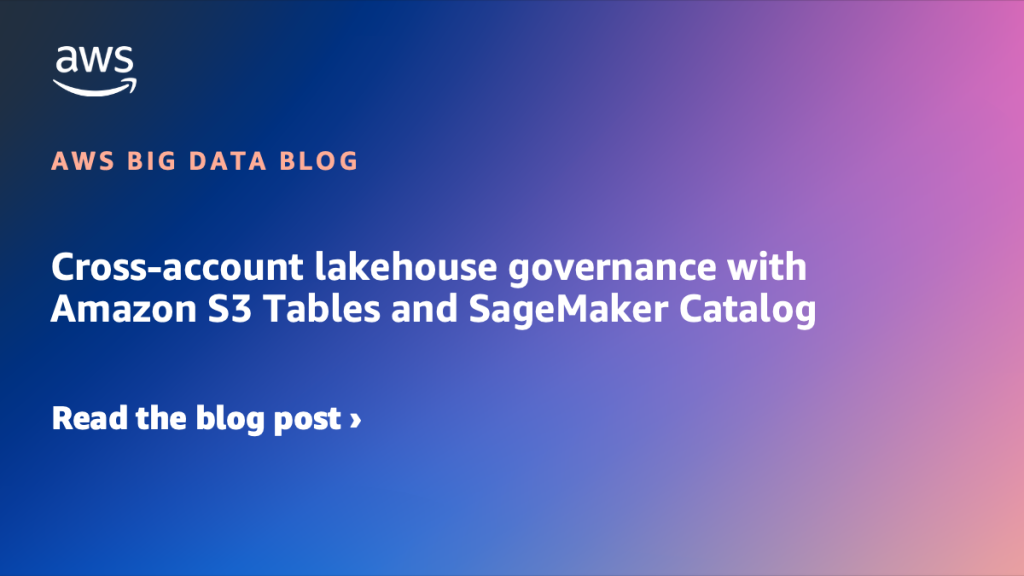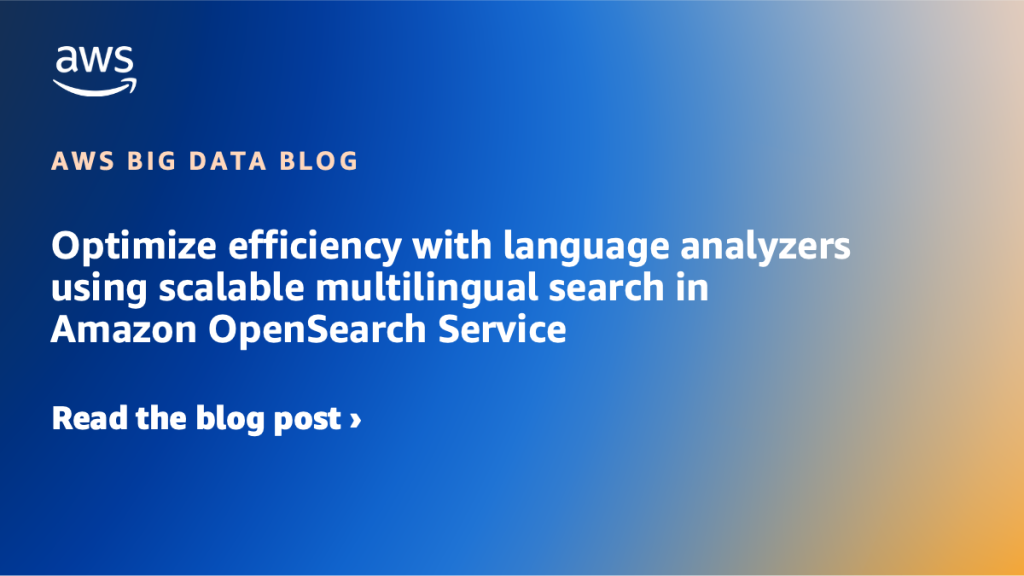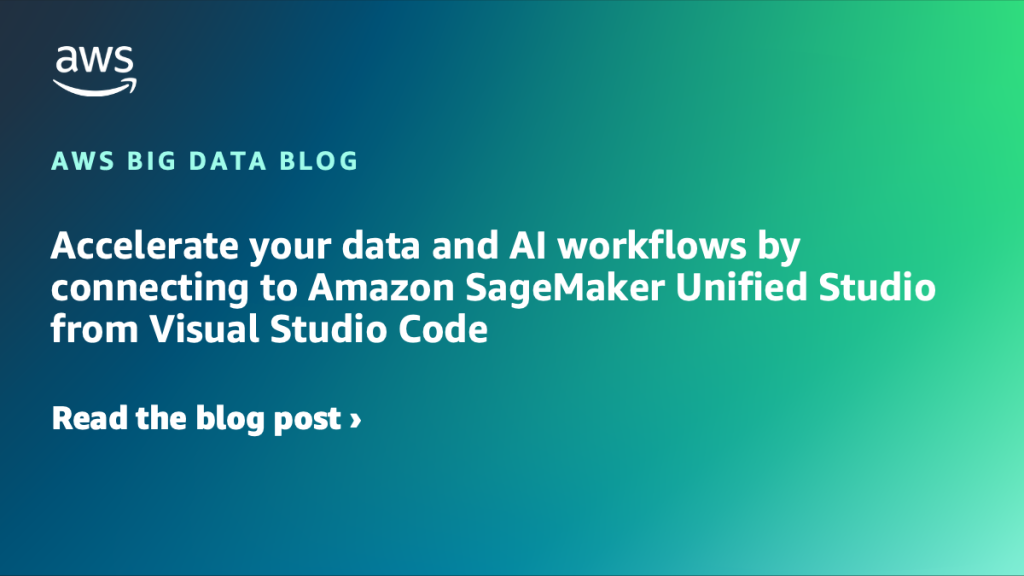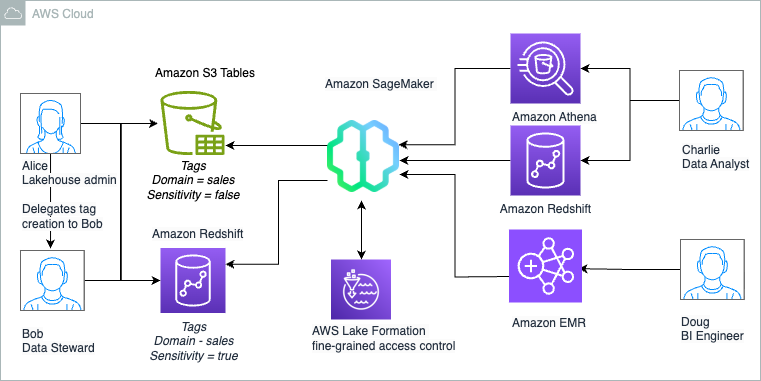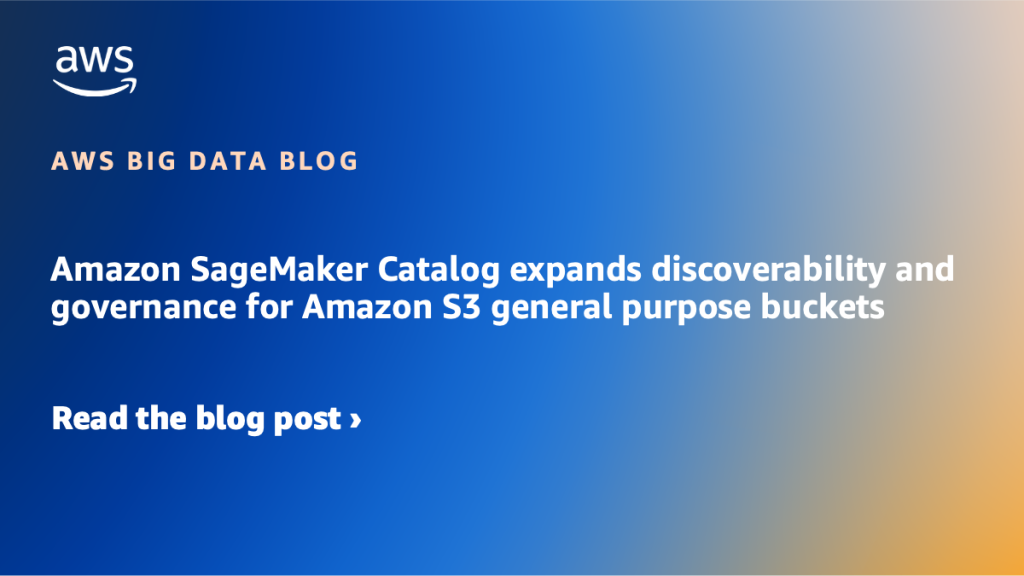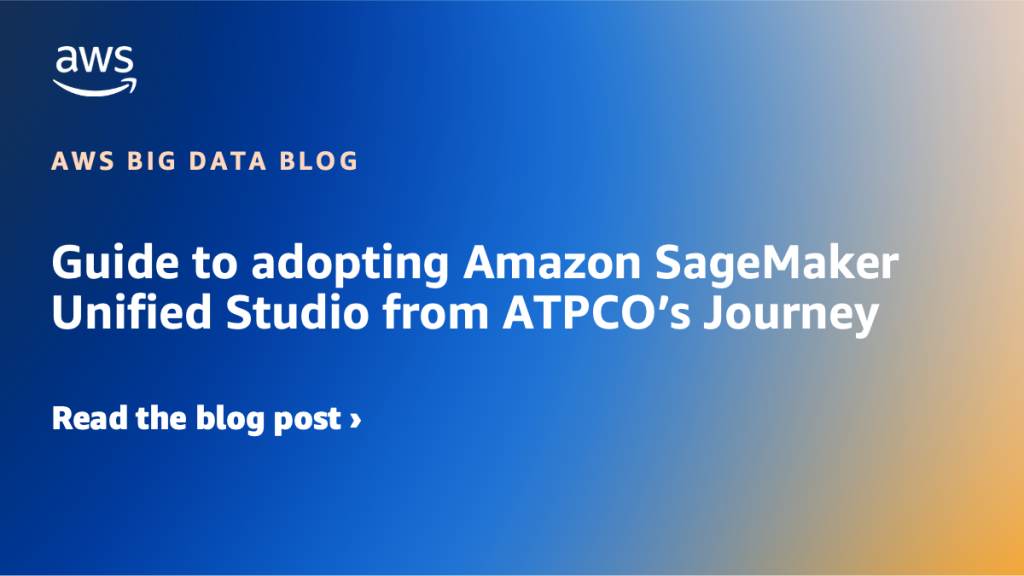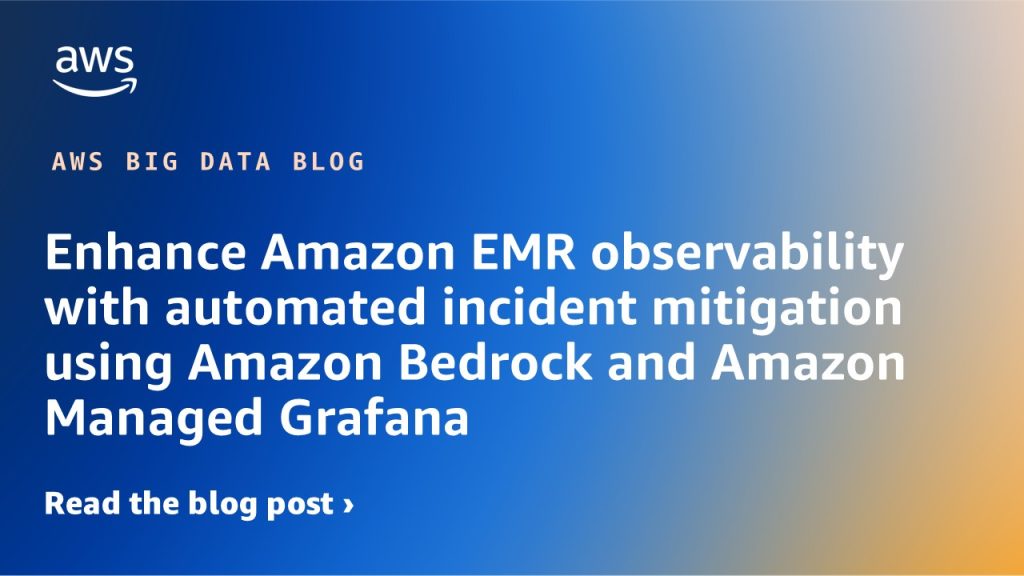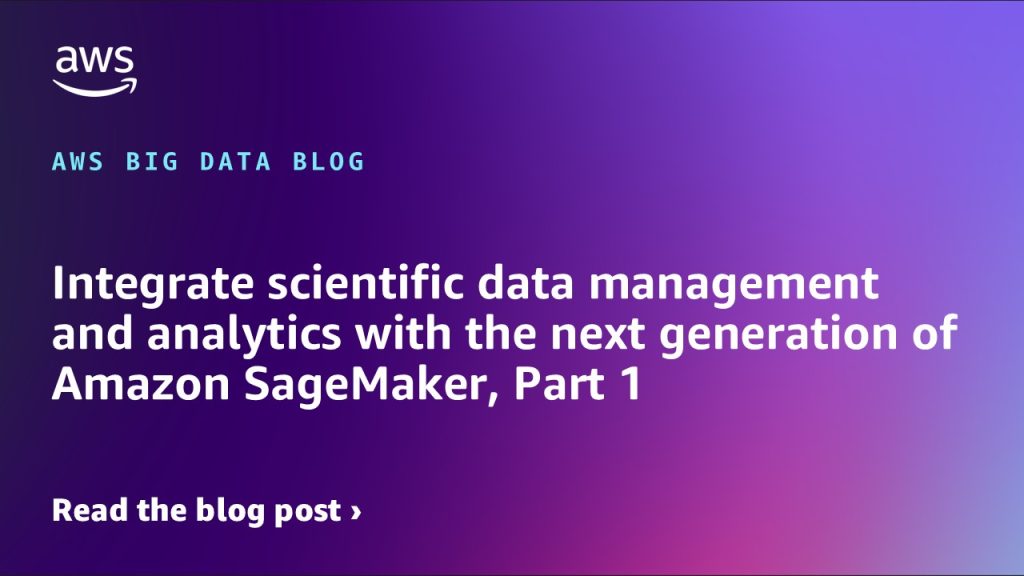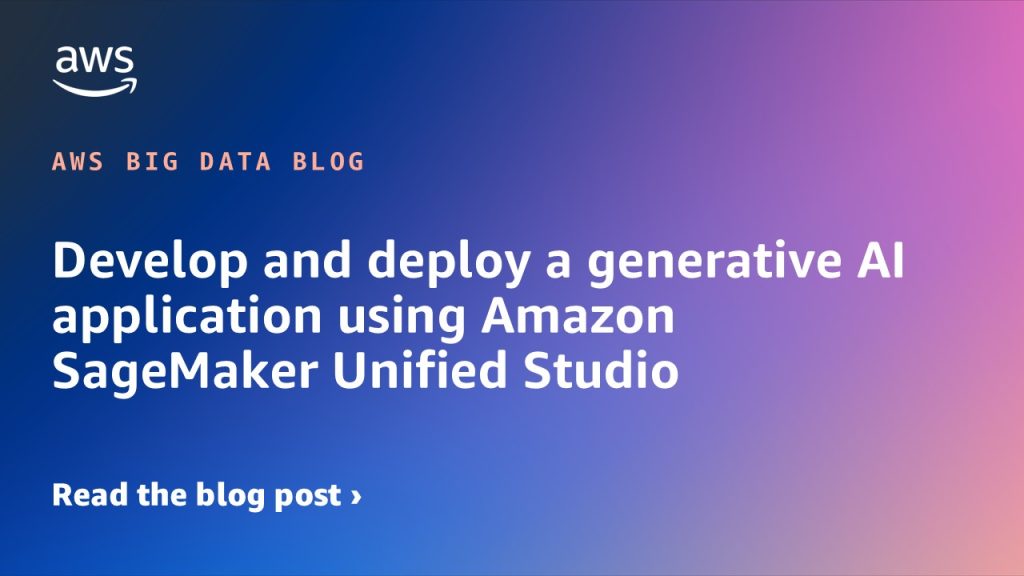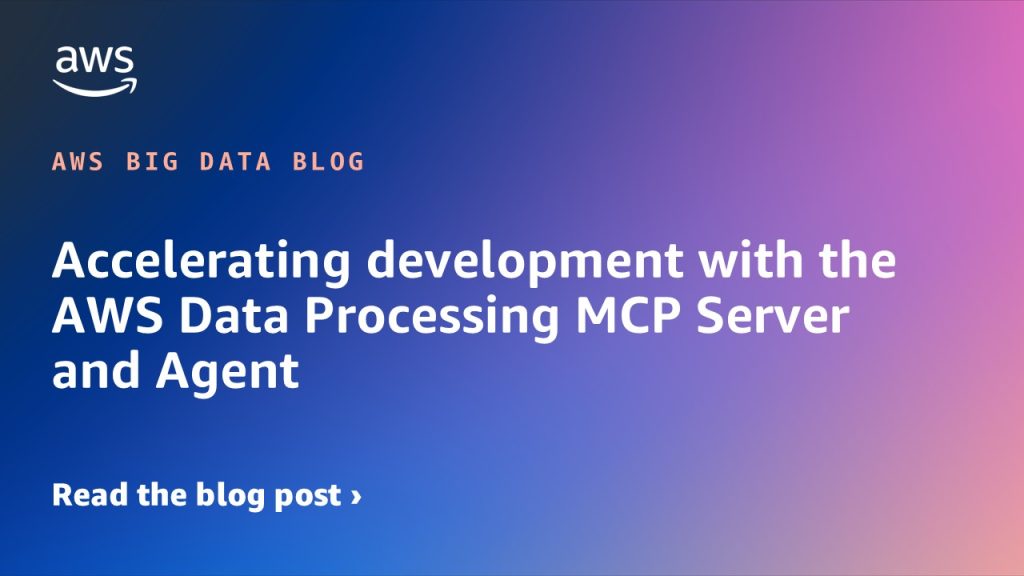AWS Big Data Blog
Category: Artificial Intelligence
Cross-account lakehouse governance with Amazon S3 Tables and SageMaker Catalog
In this post, we walk you through a practical solution for secure, efficient cross-account data sharing and analysis. You’ll learn how to set up cross-account access to S3 Tables using federated catalogs in Amazon SageMaker, perform unified queries across accounts with Amazon Athena in Amazon SageMaker Unified Studio, and implement fine-grained access controls at the column level using AWS Lake Formation.
Optimize efficiency with language analyzers using scalable multilingual search in Amazon OpenSearch Service
Organizations manage content across multiple languages as they expand globally. Ecommerce platforms, customer support systems, and knowledge bases require efficient multilingual search capabilities to serve diverse user bases effectively. This unified search approach helps multinational organizations maintain centralized content repositories while making sure users, regardless of their preferred language, can effectively find and access relevant […]
Accelerate your data and AI workflows by connecting to Amazon SageMaker Unified Studio from Visual Studio Code
In this post, we demonstrate how to connect your local VS Code to SageMaker Unified Studio so you can build complete end-to-end data and AI workflows while working in your preferred development environment.
The Amazon SageMaker Lakehouse Architecture now supports Tag-Based Access Control for federated catalogs
We are now announcing support for Lake Formation tag-based access control (LF-TBAC) to federated catalogs of S3 Tables, Redshift data warehouses, and federated data sources such as Amazon DynamoDB, MySQL, PostgreSQL, SQL Server, Oracle, Amazon DocumentDB, Google BigQuery, and Snowflake. In this post, we illustrate how to manage S3 Tables and Redshift tables in the lakehouse using a single fine-grained access control mechanism of LF-TBAC. We also show how to access these lakehouse tables using your choice of analytics services, such as Athena, Redshift, and Apache Spark in Amazon EMR Serverless.
Amazon SageMaker Catalog expands discoverability and governance for Amazon S3 general purpose buckets
In July 2025, Amazon SageMaker announced support for Amazon Simple Storage Service (Amazon S3) general purpose buckets and prefixes in Amazon SageMaker Catalog that delivers fine-grained access control and permissions through S3 Access Grants. In this post, we explore how this integration addresses key challenges our customers have shared with us, and how data producers, such as administrators and data engineers, can seamlessly share and govern S3 buckets and prefixes using S3 Access Grants, while making it readily discoverable for data consumers.
Guide to adopting Amazon SageMaker Unified Studio from ATPCO’s Journey
ATPCO is the backbone of modern airline retailing, helping airlines and third-party channels deliver the right offers to customers at the right time. ATPCO addressed data governance challenges using Amazon DataZone. SageMaker Unified Studio, built on the same architecture as Amazon DataZone, offers additional capabilities, so users can complete various tasks such as building data pipelines using AWS Glue and Amazon EMR, or conducting analyses using Amazon Athena and Amazon Redshift query editor across diverse datasets, all within a single, unified environment. In this post, we walk you through the challenges ATPCO addresses for their business using SageMaker Unified Studio.
Enhance Amazon EMR observability with automated incident mitigation using Amazon Bedrock and Amazon Managed Grafana
In this post, we demonstrate how to integrate real-time monitoring with AI-powered remediation suggestions, combining Amazon Managed Grafana for visualization, Amazon Bedrock for intelligent response recommendations, and AWS Systems Manager for automated remediation actions on Amazon Web Services (AWS).
Integrate scientific data management and analytics with the next generation of Amazon SageMaker, Part 1
In this blog post, AWS introduces a solution to a common challenge in scientific research – the inefficient management of fragmented scientific data. The post demonstrates how the next generation of Amazon SageMaker, through its Unified Studio and Catalog features, helps scientists streamline their workflow by integrating data management and analytics capabilities.
Develop and deploy a generative AI application using Amazon SageMaker Unified Studio
In this post, we demonstrate how to use Amazon Bedrock Flows in SageMaker Unified Studio to build a sophisticated generative AI application for financial analysis and investment decision-making.
Accelerating development with the AWS Data Processing MCP Server and Agent
We’re excited to introduce the AWS Data Processing MCP Server, an open-source tool that uses the Model Context Protocol (MCP) to simplify analytics environment setup on AWS. In this post, we explore how the AWS Data Processing MCP Server accelerates analytics solution development and how data engineers can transform raw data into business-ready insights through AI-assisted workflows, significantly reducing development time and complexity.
